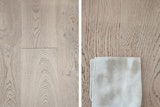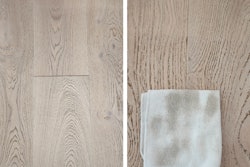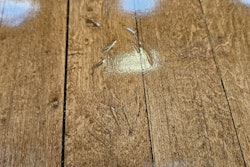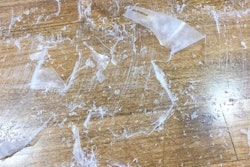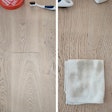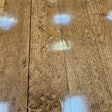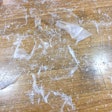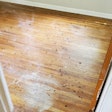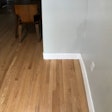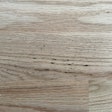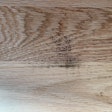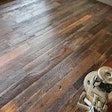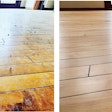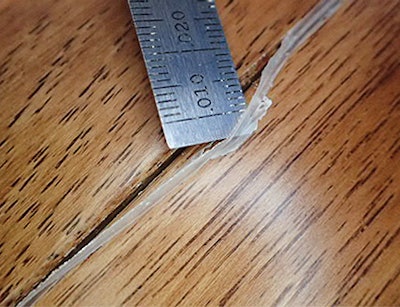
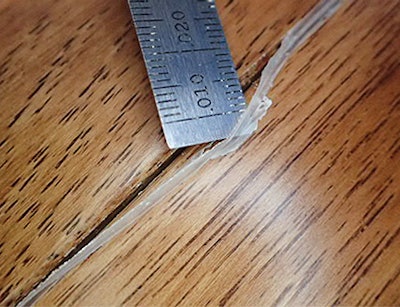
The Problem
I was called to inspect a newly installed floor because of concerns about finish peeling and white lines between boards.
What Happened
In August, approximately 1,400 square feet of 3⁄4-inch-thick, 4-inch-wide solid prefinished hickory flooring was nailed and glued down throughout the existing home in Colorado. After installation, the homeowners complained that approximately 40 percent of the flooring had various degrees of contamination from adhesive on the face of the boards. After attempts to remove it were unsuccessful, the contractor power-scrubbed the floor, then abraded it and applied one coat of a commercial-grade waterborne finish. After it cured, the homeowners noticed areas of peeling finish, as well as white lines between boards.
The Inspection

From a standing position I could see areas of peeling finish from 1⁄2 inch to 3 inches in diameter. Lightly scraping the flooring with my fingernail, I was able to remove the finish from the plank surface. I could also see what looked like white lines between planks throughout the installation along both the sides and ends of boards. Closer inspection showed the white lines affected only the beveled edges of the planks. Using the edge of a taper gauge, I was able to lift and separate the aftermarket finish along the beveled edges in several areas. Even closer examination with an illuminated magnifying lens showed no damage to the factory-applied finish in the affected areas, including no evidence of abrasion.

The peeling finish indicated a fundamental lack of adhesion between the aftermarket waterborne finish and the factory-applied finish. The same was true for the white lines of finish that were bridging the gaps between boards. It appeared that moisture was locked in due to the thickness of the coating in the bevels, and those lines were exacerbated by the bevels not having been abraded appropriately before the waterborne finish was applied, so the finish could not create a mechanical bond.
These issues are the responsibility of the sand-and-finish contractor. Note that—as is standard for a prefinished floor—the warranty on this flooring was null and void as soon as it was abraded for the recoat.

How to Fix the Floor
The floor must be sanded to bare wood.
In the Future
Finish peeling can be caused by a lack of abrasion, incompatibility between finishes and/or surface contamination. It is extremely important to do an adhesion test area before going ahead with any recoat, whether it's over a prefinished or site-finished floor. Note that some prefinished floors cannot be recoated at all! When recoating a beveled floor, extra effort must be taken to prepare the bevels so the finish will adhere. Using a roller can help maintain the correct finish thickness when coating over bevels.











